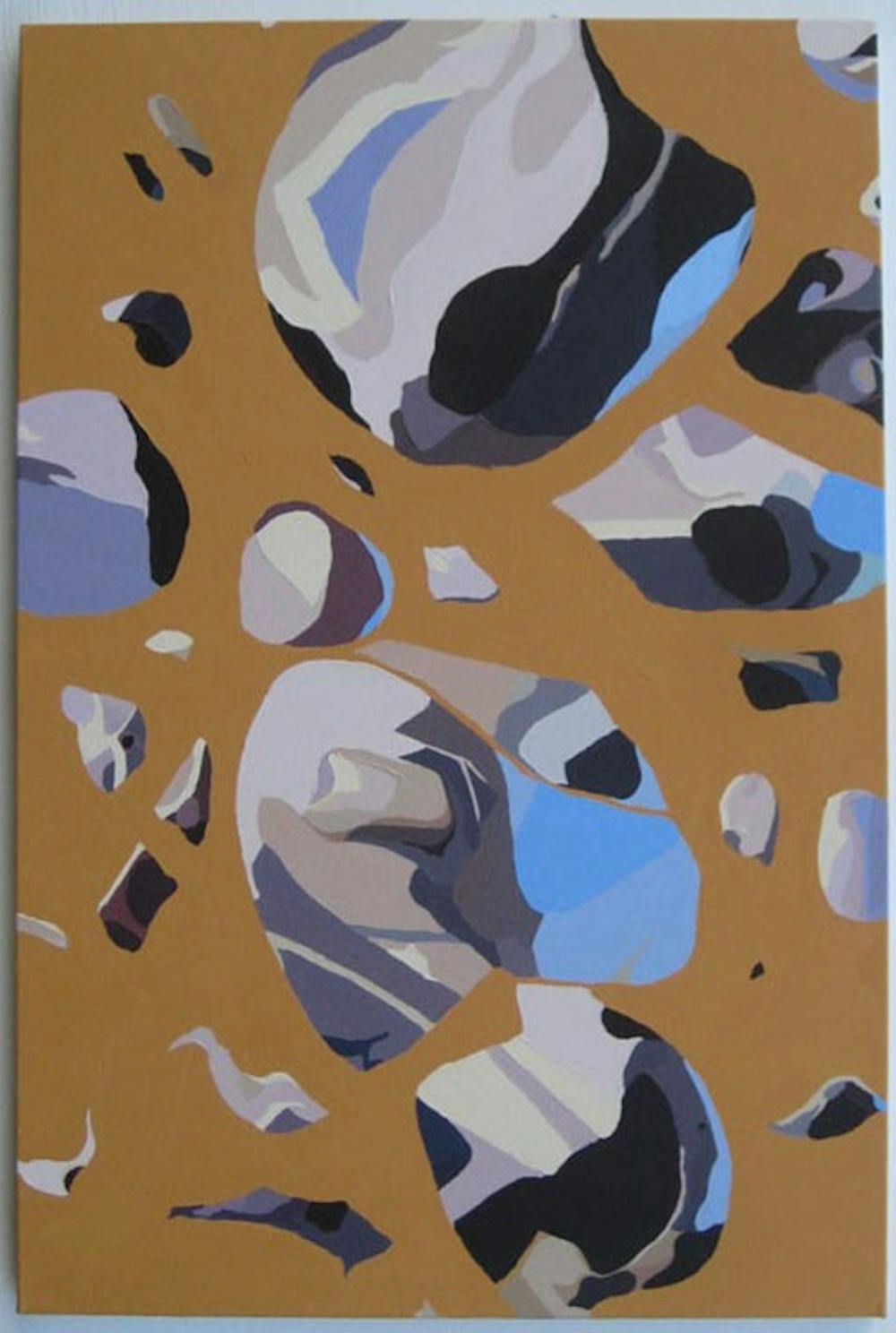Name and Year: Jacob Rivkin, MFA 2013 Hometown: Baltimore, MD Degree: PennDesign Master of Fine Arts; Vassar College 2007, BA in Studio Art Medium of Choice: Drawing/painting Website: http://jacobrivkin.carbonmade.com
-------
Street: Where do you find inspiration? Jacob Rivkin: I find inspiration through reading, traveling and making. Reading everything — newspapers, short fiction, narrative non–fiction and traveling all bestow a multitude of perspectives hopefully different from my own. Knowing another perspective can help me to formulate and rationalize my own. And then there is making. I think I learn the most just from paying attention and enjoying the process while creating something. A new recipe, small drawing, an assemblage, anything. Some artists I look to are Tim Hawkinson, Julie Mehretu and Tai–Shan Schierenberg.
Street: What medium are you most comfortable with? Have you experimented with any others? JR: I’m most comfortable using pen and pencil on paper. I find the most direct pleasure from creating linear drawings. During my undergraduate study, I focused on welding and creating colorful linear structures before moving more towards painting. In India, I studied Indian miniature painting and in China I studied Chinese traditional landscape painting with ink and brush. Within the graduate program, I have started to experiment with low–tech animation, performance and using acrylic paint as a sculptural medium.
Street: Tell us about your interest in yeast architecture? JR: My interest in bread and yeast architecture came from when I was running my own wood–fire oven bakery on a farm in Connecticut. I wanted to make artwork that I was passionate about, so I combined my two loves — painting and bread. I found the yeast architecture to be engaging because we all have a tactile, and historical, relationship with bread. Drawing the forms through rigorous observation I began to notice the composition of shapes had an analogous connection to abstraction. The idea that something in the real world can be simultaneously abstract and representational seems rich to me.
Street: Tell us about your interest in both food and art? How does this influence your work? How does this influence your food? JR: Food is the intersection between the social, political, environmental and, most importantly, the body. We are reaching a crisis point in our contemporary society between how and where food is produced and consumed, and who has access to it. The disparities that occur are what I am making work about now. In learning more about the global food system, I feel more responsible for my actions. I try to eat minimally processed foods, well–raised meat and make a lot of things on my own — like brewing my own beer or kimchi, for example.
Street: How do you feel about abstraction obtained from nature as opposed to that derived from the unconscious? JR: For me, I find observation and its translation to be a key to my artistic practice. Abstraction derived from nature grounds the work in a content that is relatable to experience. That is not to say that unconscious, or improvisational, abstraction (mainly in terms of painting) is devoid of content. But I am for having work that brings in the world, outside of what is just on the canvas.
Street: Where do you see your work heading in the future? JR: Because of the nature of the Interdisciplinary MFA, it’s hard to know. Right now, I see my work becoming more sculptural and material–based. I’m working with creating paint skins made from acrylic paint that I then apply over wood sculptures. Working within three–dimensions is both liberating and exciting.
Street: What is the most valuable piece of advice you could give to an aspiring artist in undergrad? JR: Be able to talk about your work. If you can explain why you made something, clearly, without excess jargon, it will be a foundation to make more, stronger work. Also, don’t skimp on sleep and eat lots of vegetables.
Click here for more video interviews with Jacob.
[photospace]







